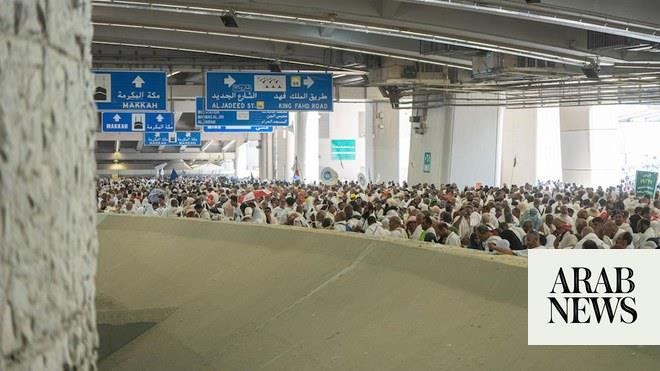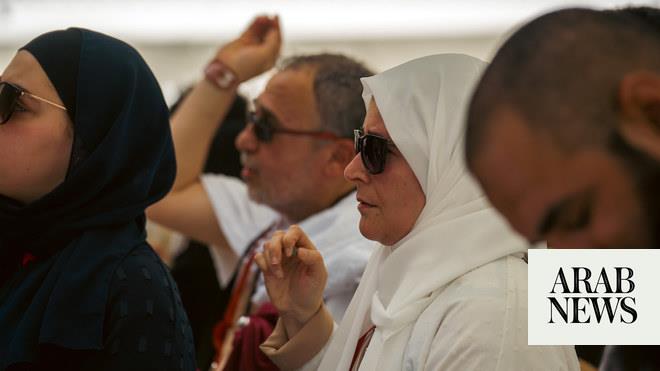
RIYADH: Hajj pilgrims on Sunday reached Jamarat Bridge as they advanced through Mina for the final rite, the stoning of the devil, on the first day of Tashreeq.
It is here that Muslims believe the devil tried to talk the Prophet Ibrahim out of submitting to God’s will. On the 10th day of Dul Hijjah, Hajj pilgrims collect small stones that they throw at three pillars in the Jamarat Al-Aqaba, representing the devil.
Huge crowds lined up to perform the rite, many holding umbrellas to shield themselves from the sun. The pilgrims say “Allah-u Akbar” (“God is the greatest”) each time they cast a pebble.
Pilgrims can stone the pillars any time from midday to midnight on the day of the ritual.
After finishing the ritual, male pilgrims traditionally shave or cut their hair and change out of their ihram. Women cut a lock of their hair.
The ihram symbolizes equality, religious unity and the pursuit of spiritual renewal.
Security guards sprayed the pilgrims with water as they braved searing heat to reach the Jamarat complex. Temperatures as high as 45 degrees Celsius have been recorded at the Hajj this year.
The pilgrims will then return to Makkah to do Tawaf, the circumambulation of the Kaaba.
Junaid Nizami, a pilgrim from Pakistan, told Arab News that he was impressed by the arrangements in place to ensure the safety of pilgrims.
“My experience in Jamarat was good and they prepared very well for the pilgrims. Also, the system (is created) in a way where no one can clash with each other. There are police, medical staff and helpers who are supporting the people.”
After dawn prayers, when pilgrims leave Muzdalifah and proceed to Jamarat to take part in the stoning rite, women and older pilgrims can delegate this responsibility to a male in their spiritual journey.










